By TREVOR HOGG
Images courtesy of Netflix.
By TREVOR HOGG
Images courtesy of Netflix.
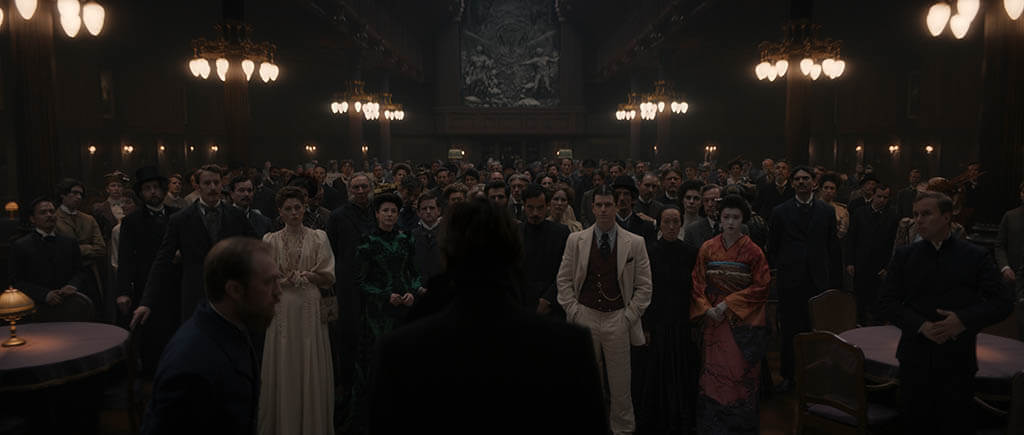
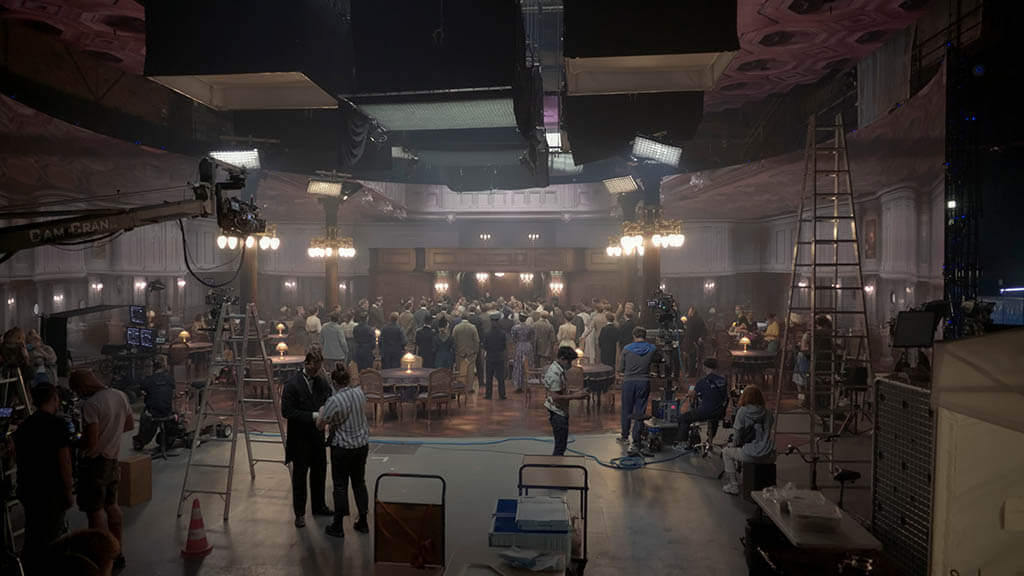
One of the hardest environments to execute was the dinning room of the Kerberos.
Trading the sky-high adventures of The Aeronauts for the oceanic travels of 1899 is Visual Effects Supervisor Christian Kaestner, who oversaw the digital effects and virtual production for the science fiction mystery. The story unfolds on a passenger steamship traveling across the Atlantic Ocean from Southampton, U.K. to New York City at the turn of the 20th century that discovers a derelict sister vessel that has long since been lost at sea. Unlike most episodic productions where there are multiple directors and a showrunner, Co-Creator/Executive Producer/Co-Showrunner Baran bo Odar helmed the eight episodes.
“Everything in the art department is built in Rhino 3D these days, so Udo would give us those assets which were then put into Unreal Engine without textures. Bo could put on the VR glasses, and we decided on the lenses, knew that the camera was going to be an ARRI ALEXA Mini LF, put in the film backs and laid out some cameras. We were able with a snapshot tool to do a camera pass of the scene that gave you a grey-scale storyboard. Then Bo went away and storyboarded other sequences because VR scouting is quite time-consuming. I marked up the storyboards determining what was going to be visual effects and virtual production.”
—Christian Kaestner, Visual Effects Supervisor
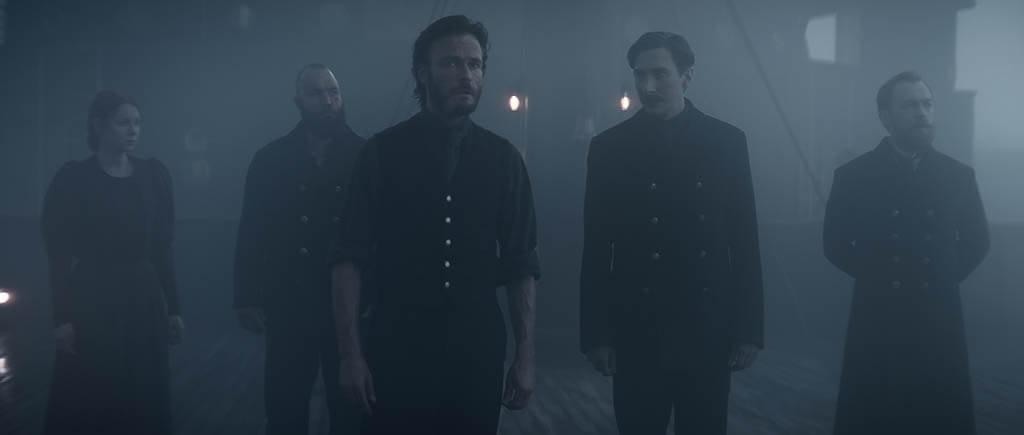
Scenes were broken down into a massive flowchart categorized by time of day and mood, because every episode is one day that was either overcast, drizzle, heavy rain, foggy, morning, afternoon, evening or night.
An exciting aspect of the project was the opportunity to delve into the virtual production methodology. “When I started, we had rough outlines that were four pages long for each episode and worked closely with [Production Designer] Udo Kramer to figure out what needs to go where, what was going to be virtual production and set,” states Kaestner. “I was impressed that Bo and Jantje Friese [Co-Creator/Executive Producer/Co-Showrunner] knew in their heads exactly what they wanted. Bo [Odar] had a book of things that he liked. Because of COVID-19 we couldn’t be all in the room at the same time, so I even used some online whiteboards and asked, ‘Hey, about these things?’ Bo put up his stuff, and we would mark up stuff that he liked. We were able to work on the mood, palette and desired lighting early on.”
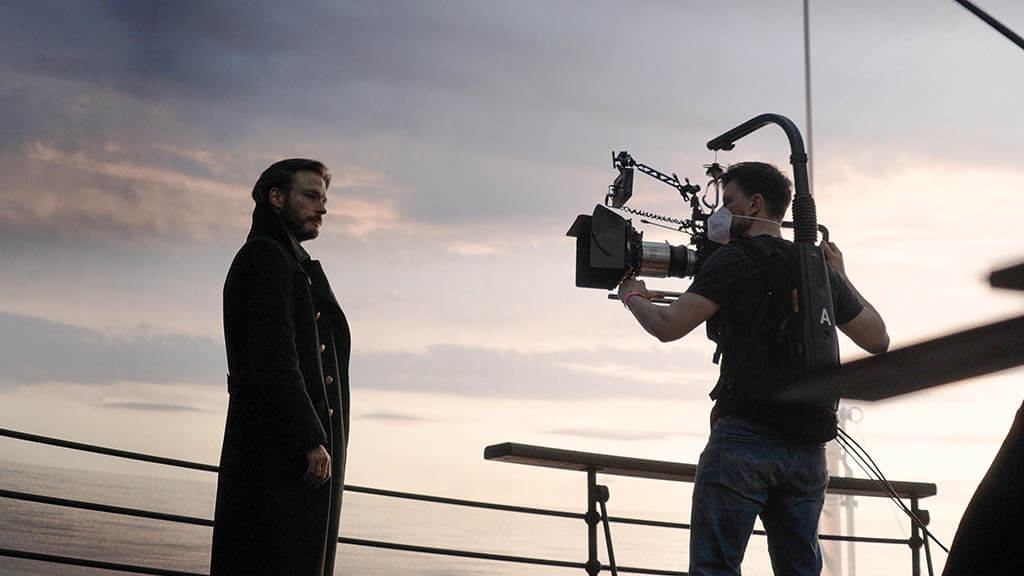
HDRI plate photography was captured for the skies.
Martin Macrae, who is Head of Art Department at Framestore, illustrated with Odar some key moments and visuals that informed the production design. “Everything in the art department is built in Rhino 3D these days, so Udo would give us those assets which were then put into Unreal Engine without textures,” Kaestner remarks. “Bo could put on the VR glasses, and we decided on the lenses, knew that the camera was going to be an ARRI ALEXA Mini LF, put in the film backs and laid out some cameras. We were able with a snapshot tool to do a camera pass of the scene that gave you a grey-scale storyboard. Then Bo went away and storyboarded other sequences because VR scouting is quite time-consuming. I marked up the storyboards determining what was going to be visual effects and virtual production.”
“It was quite a big technical challenge to get the ocean into Unreal Engine looking the way we wanted it to appear. For everyone, it was about getting the mood across, so it was important that the scene and lighting represent what it was going to be later on. That’s why the pre-lighting process with [Cinematographer] Nikolaus Summerer was so crucial as well. Unreal Engine was not ready to get the final surface detail in real-time, but what we got right were the surface dynamics and the speed of travel. We were traveling between 18 and 30 knots. There were presets for that, so when the ocean was close up and out of focus we could keep it in Unreal Engine.”
—Christian Kaestner, Visual Effects Supervisor
With the action unfolding in the Atlantic Ocean, water was a dominant visual element. “It was quite a big technical challenge to get the ocean into Unreal Engine looking the way we wanted it to appear,” Kaestner states. “For everyone, it was about getting the mood across, so it was important that the scene and lighting represent what it was going to be later on. That’s why the pre-lighting process with [Cinematographer] Nikolaus Summerer was so crucial as well.” Perception of the height and scale of water is determined by the surface detail. Explains Kaestner, “Unreal Engine was not ready to get the final surface detail in real-time, but what we got right were the surface dynamics and the speed of travel. We were traveling between 18 and 30 knots. There were presets for that, so when the ocean was close up and out of focus we could keep it in Unreal Engine.”
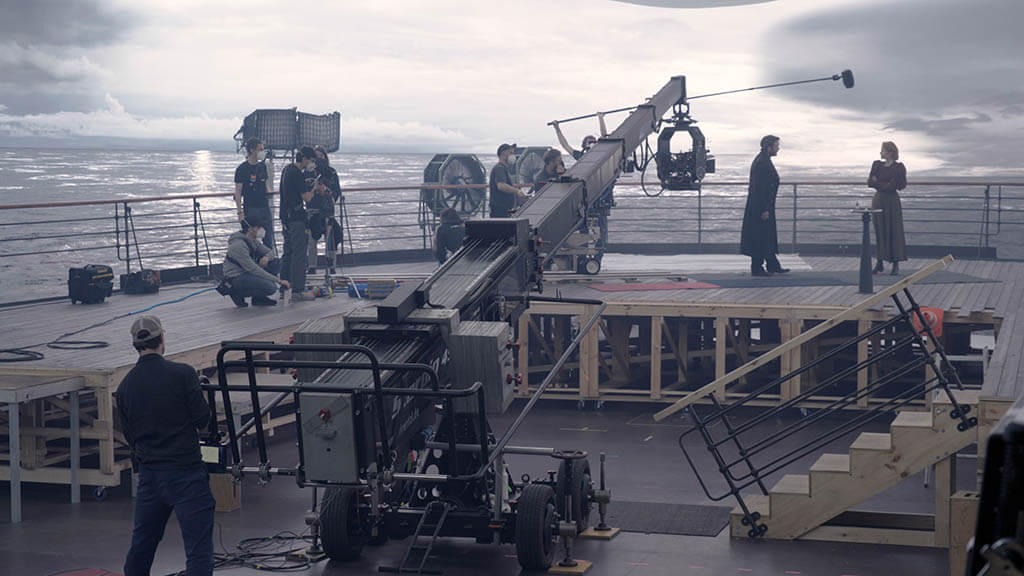
A physical front and rear deck were constructed by Production Designer Udo Kramer.
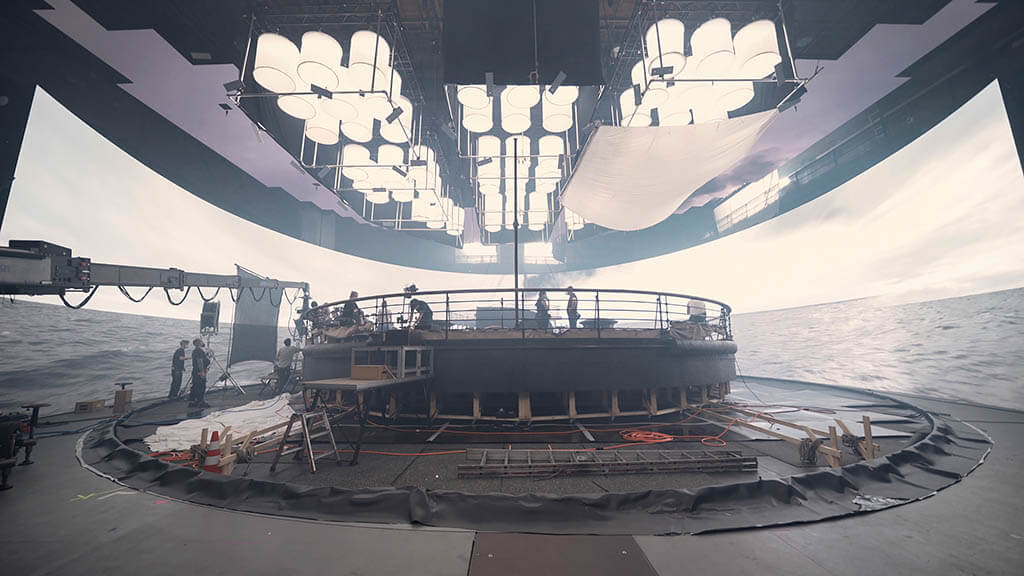
Reducing the need to redress sets for different setups was a rotating turntable that could be rotated 360 degrees within two minutes.
Theatrical stage techniques came in handy. “When we were doing the scouting, we knew the path of camera, and Bo and Nick wanted to shoot parallel with the camera so you would have the wide and closeup next to each other,” Kaestner remarks. “That meant to do a scene they would have to turn around quite a lot. The solution was to have a turntable because otherwise you would have to redress everything all of the time. That was so fun. To certain degree we were with this new toy and asking, ‘What can we do with it?’ But at the same time there was the desire to be efficient, on budget and on time. That turntable was such a great way because we had so many angles on the decks that had to be covered. To rotate 360 was like a two-minute turnaround.”
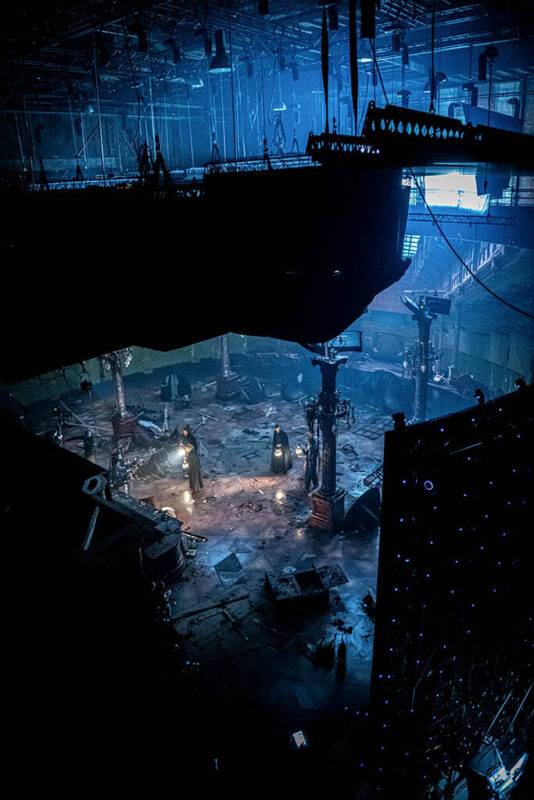
Footage was shot with a specific LUT and brighter than what was streamed.
“It was about how far we can push the game engine to give us something that is not plate photography, but a CG asset that holds up being believable. That was always going to be a challenge because we’re so used to physically-based rendering these days where everything looks so real. In that sense, the slightly darker palette and indirect muted lighting helped us because we could bake a lot of that in.”
—Christian Kaestner, Visual Effects Supervisor
HDRI plate photography was captured for the skies, Kaestner explains. “We broke down all of the scenes in the episodes into a massive flowchart, categorized by time of day and mood because every episode is one day that was either overcast, drizzle, heavy rain, morning, afternoon, evening or night.” To protect the LED screens from atmospherics, a rain rig was created by the special effects team led by Gerd Nefzer. “There were five to seven rain jets on top that we could turn on and off based on where they were shooting,” Kaestner adds. “We only had rain where it was needed for the shot. The engine and boiler rooms did not have any practical fire. We did have lots of smoke, especially fog, in Episode 103.”
Footage was shot with a specific LUT and brighter than what was streamed. “If you don’t have enough light in a LED volume, it ends up noisy, so we needed to be quite brighter onset, but when you looked through the camera with all of the settings that we did then that was the mood Bo wanted,” Kaestner observes. “Steffen Paul [Lead Digital Colorist] did test grades with Da Vinci Resolve on set and sent it over to Netflix, which said, ‘This is really dark!’ There are some dark scenes especially at night, but the show has a nice cinematic look to it.” Over 1,000 visual effects shots for the eight episodes were divided between Framestore, DNEG and Pixstone. “It was about how far we can push the game engine to give us something that is not plate photography, but a CG asset that holds up being believable. That was always going to be a challenge because we’re so used to physically-based rendering these days where everything looks so real. In that sense, the slightly darker palette and indirect muted lighting helped us because we could bake a lot of that in,” Kaestner notes.
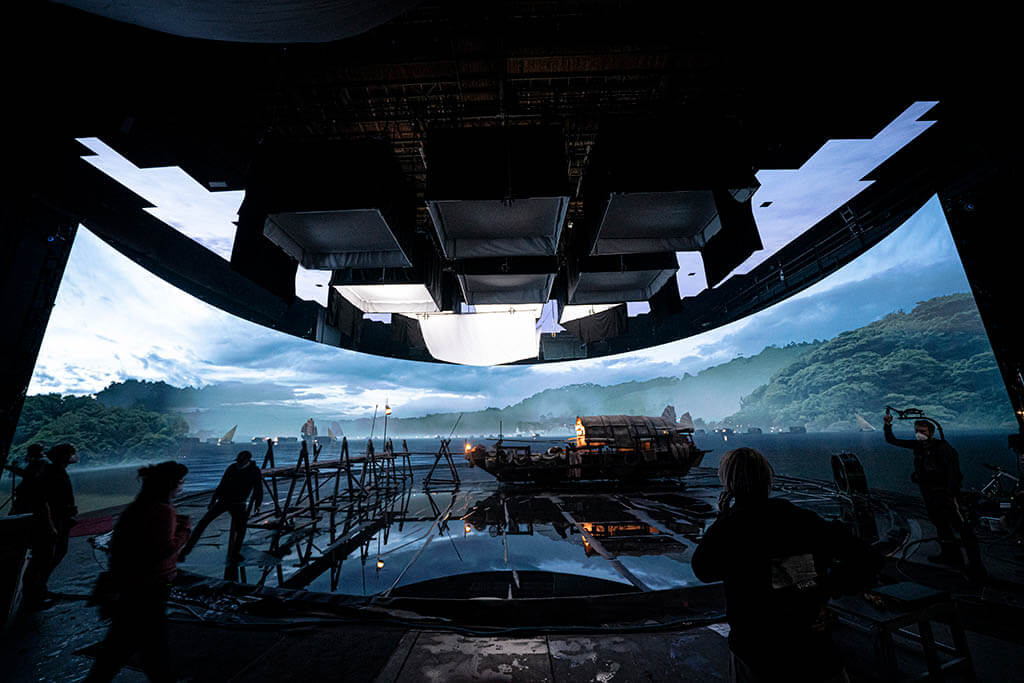
The Unreal Engine had to be pushed far enough to produce something that is not plate photography, but a CG asset that holds up being believable.
A variant of the Kerberos steamship is the Prometheus. “Everything on the Kerberos was shot first and then we damaged and dressed it up as the Prometheus,” Kaestner remarks. “For the steamships we had some guidance like RMS Lusitania, which was from the period. We turned it black, changed the colors, and talked with Udo about deciding where the engine room was going to be. It was crucial that Udo came up with a physical front and rear deck because we knew from the view of the deck how much of the ship you would see. We built it in a way that we had enough detail to capture in-camera, but [it] would run in real-time with the water and skies.” Prometheus as a spaceship was always going to be a visual effects build for the exterior shots. “Bo wanted something that was in the direction of Alien-esque rather than ISS or NASA ship,” Kaestner says. “It had to look like a submarine with dark colors, weathered and used but still plausible. That’s why we ended up with the rotating mechanism and artificial gravity.”
“We got a lot out of it [virtual production], especially for episodic, because there were so many sets and scenes that we went back to that could be replicated and, with small modifications, cover the dining room of the Kerberos and have a variant of the dining room in the Prometheus. We had so many scenes on the deck with consistent lighting over three weeks. … I don’t think virtual production solves all of the problems, but when used correctly it can be powerful.”
—Christian Kaestner, Visual Effects Supervisor
One particular environment proved difficult to execute. “The dining room did not run in real-time the day before the shoot,” Kaestner reveals. “You push your assets to the limit to the last minute. Once we had done the pre-light with Nick, we knew exactly what he wanted in terms of look, and that’s when you can do optimizations such as, ‘This area is not going to be shot often, so maybe we can simplify the geometry here.’
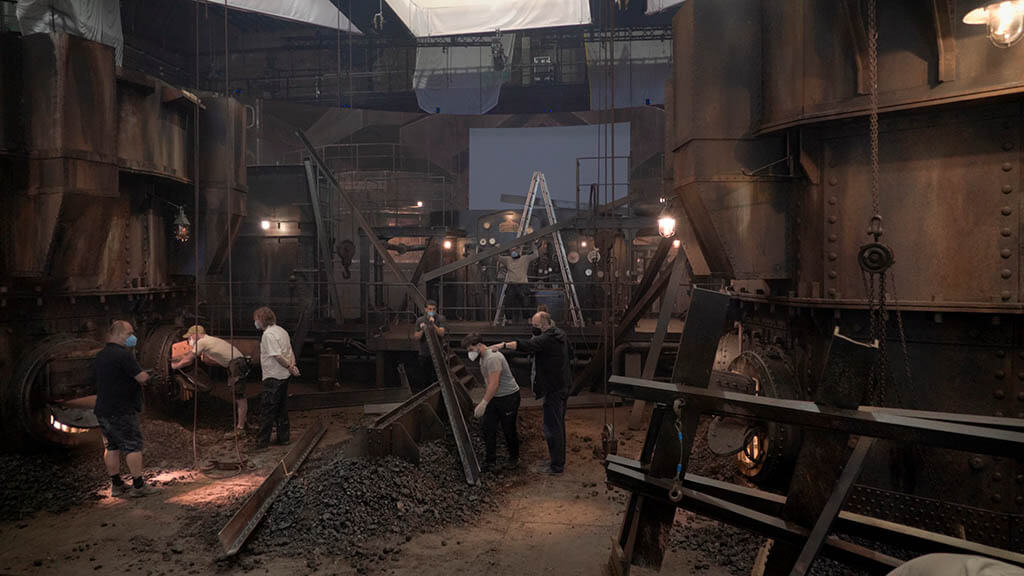
The engine and boiler rooms did not have any practical fire.
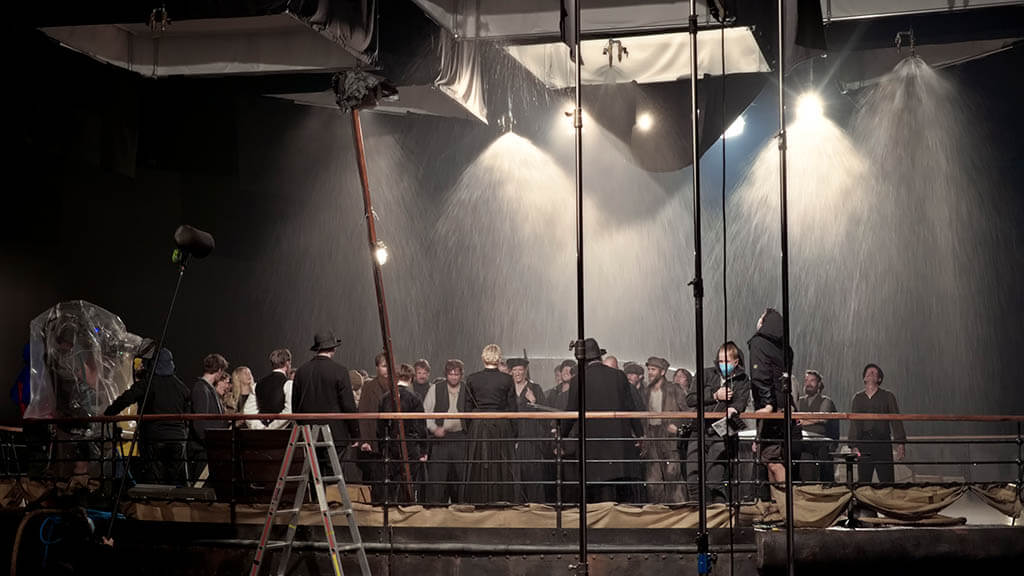
Essential atmospherics were fog and rain, with a special rig created for the latter by the special effects team led by Gerd Nefzer to protect the LED screens.
Virtual production if used wisely can be extremely efficient. “We got a lot out of it,” Kaestner says, “especially for episodic, because there were so many sets and scenes that we went back to that could be replicated and, with small modifications, cover the dining room of the Kerberos and have a variant of the dining room in the Prometheus. We had so many scenes on the deck with consistent lighting over three weeks.” The lack of greenscreen is beneficial when it comes to editorial turnovers. It’s easier for the director and editor to put something together, which was a huge benefit. “I don’t think virtual production solves all of the problems, but when used correctly it can be powerful,” he concludes.